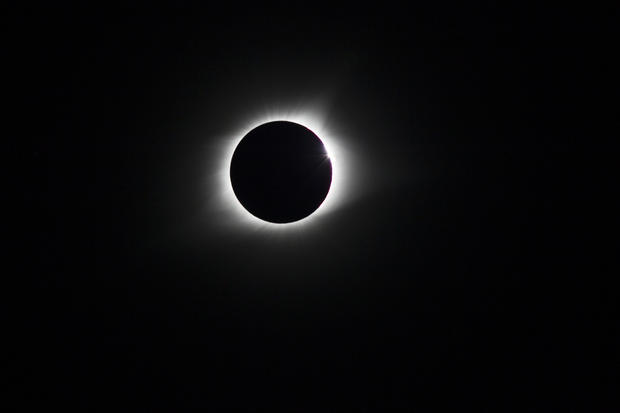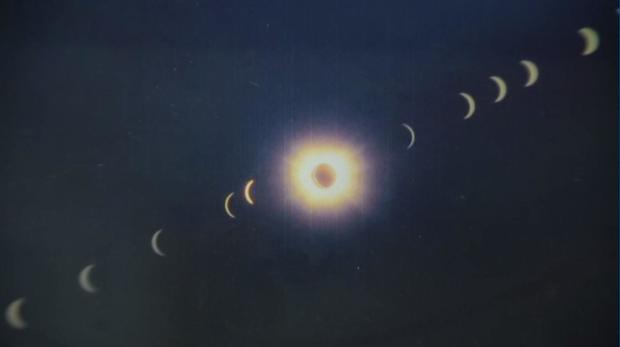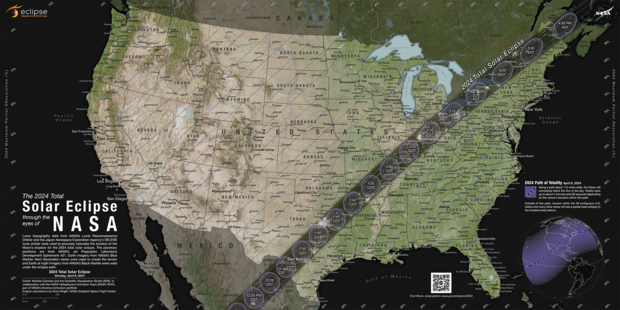See the list of notable past total solar eclipses in the U.S. since 1778
On April 8, 2024, a rare total solar eclipse will be visible in parts of the United States. Those in the path of totality will have the opportunity to see the sun be fully covered by the moon for several minutes.
Total solar eclipses are rare, and aren't often visible from the U.S. The last time one occurred here was in 2017, and the U.S. won't see another until 2044.
Here's a list of all the times a total solar eclipse has been recorded in the United States.
Total solar eclipse in the U.S. during the 18th century
The first recorded total solar eclipse was in 1778, according to NASA, just a few short years after the United States became an independent country. The eclipse was visible from the Carolinas to New England, and was noted by historical figures like Thomas Jefferson, according to Mount Vernon, the museum established in former President George Washington's estate. Troops in Washington's army also noted the event.

List of total solar eclipses in the U.S. during the 19th century
1806:The first total solar eclipse of the 1800s occurred in 1806, according to the National Parks Service. The path of that eclipse would have crossed from Arizona, through the Midwest and into New England, according to NASA.
1869: The next total solar eclipse was recorded in 1869. The path of totality stretched from Alaska to the Carolinas, according to NASA. Photos of the event were published in Harper's Magazine, the service said, the first mass publication to do so.
1878: The next total solar eclipse occurred in 1878, and the path of totality arced from Alaska through Louisiana, according to NASA. It was studied by an all-woman team of astronomers, according to the parks service, and Thomas Edison himself traveled to see the event, bringing scientific equipment to study the sun's corona during the eclipse.
List of total solar eclipses in the U.S. during the 20th century
1900: The first eclipse of the 20th century was in 1900, according to the parks service. The path of totality of that eclipse brought it over Wadesboro, North Carolina.
1918: In June 1918, a total solar eclipse was visible from Washington to Florida, according to the parks service. It was the last time a total solar eclipse would be visible across the entire continent for nearly 100 years.
1925: This was followed by another total solar eclipse in January 1925, which was visible from Minnesota through New England, according to NASA.
1932: In August 1932, another total solar eclipse was visible in North America. The path of totality for this eclipse was mostly in Canada, according to NASA, but was visible in northern New England including parts of Vermont, Maine, New Hampshire and Massachusetts.
1963: The next total solar eclipse in the U.S. wasn't until July 1963. This eclipse was visible in Alaska and parts of northern New England, according to NASA.
1970: In March 1970, another total solar eclipse was visible from the coast of the Southwest United States. Watch CBS News coverage of that event in the video below:
1979: The last eclipse that NASA recorded in the 20th century took place in 1979. This eclipse was visible in the Pacific Northwest and parts of Idaho and the Dakotas, but the path of totality mostly arced through Canada.

Total solar eclipses in the U.S. during the 21st century so far
Only two total solar eclipses have been visible from the United States during the 21st century. The first was the total solar eclipse of 2017, which was visible across the country. This was the first time such an event had occurred since 1918, and millions gathered to watch.
The April 8, 2024, eclipse will be the next total solar eclipse visible in the U.S. The path of totality for this eclipse will stretch from Texas to the Northeast. The eclipse will start on Mexico's Pacific coast at just after 11 a.m. PDT before traveling across the U.S. and into Canada. The eclipse will leave North America around 5:19 p.m. EDT.

The eclipse is expected to attract millions of spectators. Some areas where the event will be most visible have already declared local states of emergency to account for the number of expected visitors.
When will the next total solar eclipse be visible in the U.S.?
After the April 8 eclipse, the U.S. won't see another total solar eclipse for decades. The next total solar eclipse visible from the United States will occur in August 2044.
Total solar eclipses typically happen every one to three years somewhere around the globe, but the events are often only visible from Earth's poles or from the middle of the ocean.
- In:
- Eclipse

Kerry Breen is a reporter and news editor at CBSNews.com. A graduate of New York University's Arthur L. Carter School of Journalism, she previously worked at NBC News' TODAY Digital. She covers current events, breaking news and issues including substance use.
TwitterDisclaimer: The copyright of this article belongs to the original author. Reposting this article is solely for the purpose of information dissemination and does not constitute any investment advice. If there is any infringement, please contact us immediately. We will make corrections or deletions as necessary. Thank you.




